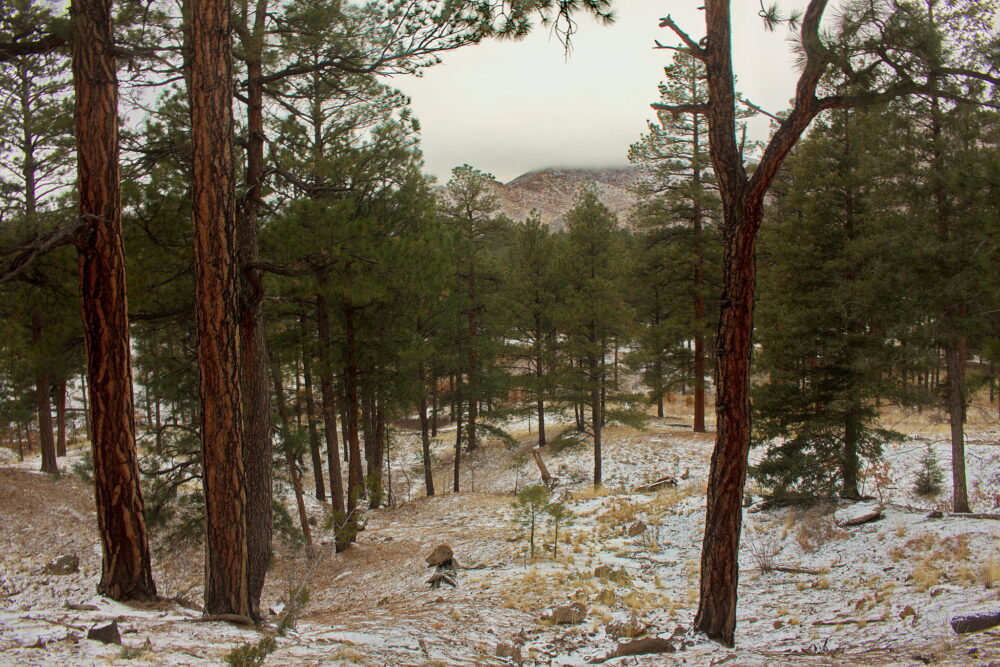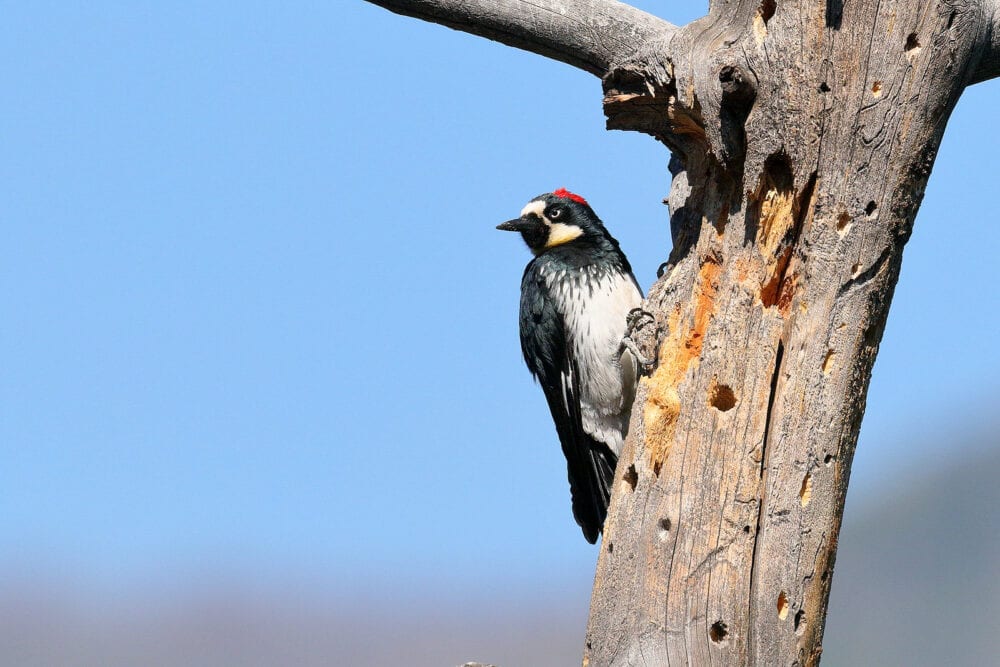
In this week of Take It Outside, we are exploring the forests of the Pajarito Plateau, from riverbank to mountaintop! Today, learn about the ponderosa pine, one of the most recognizable tree species in Western North America.
Blog Post:
PEEC volunteer Terry Foxx explores the beauty and resilience of ponderosa pine trees in today’s blog post. Read her post here.
Craft:
Ponderosa pine cones are in ample supply on the Pajarito Plateau. Go on a walk to collect pine cones, and then paint them. You can arrange or connect your painted pine cones to make animals or art! Here is how to turn your pine cone collection into a snake!
If you don’t have pine cones where you live, painted dried sticks make great snakes too. Find one whose shape reminds you of a snake, peel off the bark, and paint patterns on it! Snakes often have patterns that help them camouflage into their environment or display bright colors to signal danger.
Pro Tip: Dried tree roots from dead plants make for extra squiggly-looking snakes.
Outdoor Challenge (Beginner):
Ponderosa pines are adapted to frequent fire. See if you can find some ponderosa pines, and look for the following fire adaptations:
- Thick, fire-resistant bark
- Puzzle-shaped bark flakes that easily exfoliate, carrying heat away from the tree
- Tall trunks with few branches close to the ground, reducing the chance that heat reaches the needles at the top of the tree
- New buds protected by thick scales and long needles
Can you find a tree with signs that it has survived a fire?
Outdoor Challenge (Advanced):
The ponderosa pine grows in community with several other species. Go outside and see if you can spot any signs of the following communities:

- Abert’s squirrels eat the seeds and inner bark of the ponderosa. You might find stripped pine cones that look a bit like chicken drumsticks lying on the ground. The squirrels also eat and distribute the spores of ectomycorrhizal fungi that grow in a symbiotic relationship with ponderosas: the fungus grows around the root tips of the tree, helping it to access nutrients in the soil. In exchange, the fungus gets sugars from the tree. The symbiosis between fungus and pine trees has been going on for 150 million years!
- An Acorn Woodpecker’s favorite food is … acorns. Acorn-bearing gambel oaks tend to grow in the same areas as ponderosa pines, and the woodpeckers harvest acorns from the oaks in late summer and store the acorns for the rest of the year in standing dead ponderosa pines. These trees are called granaries, and can contain up to 50,000 acorns! You’ll see dead trees pocked with acorn-sized holes, and guarded by family groups of Acorn Woodpeckers.
Other Resources:
- Learn more about ponderosa pine forests, how they were used by Ancestral Pueblo people, and how animals use them today from Bandelier National Monument.
- Explore Acorn Woodpecker granaries in this fascinating video from the Cornell Lab of Ornithology.
- Listen to this story from NPR to learn about ponderosa pines in the Southwest and some of this tree’s unique properties.
Share Your Experience:
Tell us about the trees and forested areas near you! We’d love to see your photos, too. Please send them to takeitoutside@peecnature.org or share them on Facebook or Instagram with the hashtag #peectakeitoutside.
Join us tomorrow to explore aspen-mixed conifer forests!
